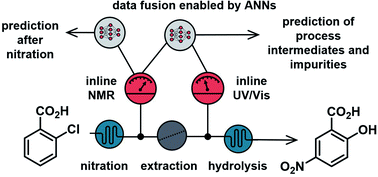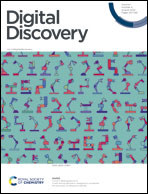Artificial neural networks and data fusion enable concentration predictions for inline process analytics†
Abstract
Real-time process analytics enable an insight into chemical processes and are essential to implementing process optimization and control algorithms. However, the quantification of reaction species in complex mixtures can be difficult due to overlapping signals or low resolution data. Here we demonstrate the utilization of artificial neural networks (ANNs), as a technique for advanced data processing of nuclear magnetic resonance (NMR) and UV/vis spectra. The ANN training process was expedited by the generation and use of simulated training spectra. The output from multiple process analytical technology (PAT) instruments, in a continuous flow synthesis towards the active pharmaceutical ingredient (API) mesalazine, were fused by using ANNs. This allowed all relevant process intermediates and impurities to be monitored at two points in the process, effectively augmenting the UV/vis spectroscopy data. Approaches such as this will encourage increased uptake and usage of low-cost and accessible PAT instruments for multistep reaction monitoring.



 Please wait while we load your content...
Please wait while we load your content...